應用跨領域素養導向創新 高齡數位照護課程的教與學

——
Presenter: 陳嬿今
RN, PhD ——
國立成功大學附設醫院護理部&護理系
《 》
2023 高齡教育數位深耕研討會 跨出第 E 步
CONTENTS 01 緣起 Reasoning 02 確定課程學習目標 Objectives of course 03 04 透過教學理論進行課程設計 Using theory to design a geriatric course 學習成效評值 Evaluation the learning outcomes
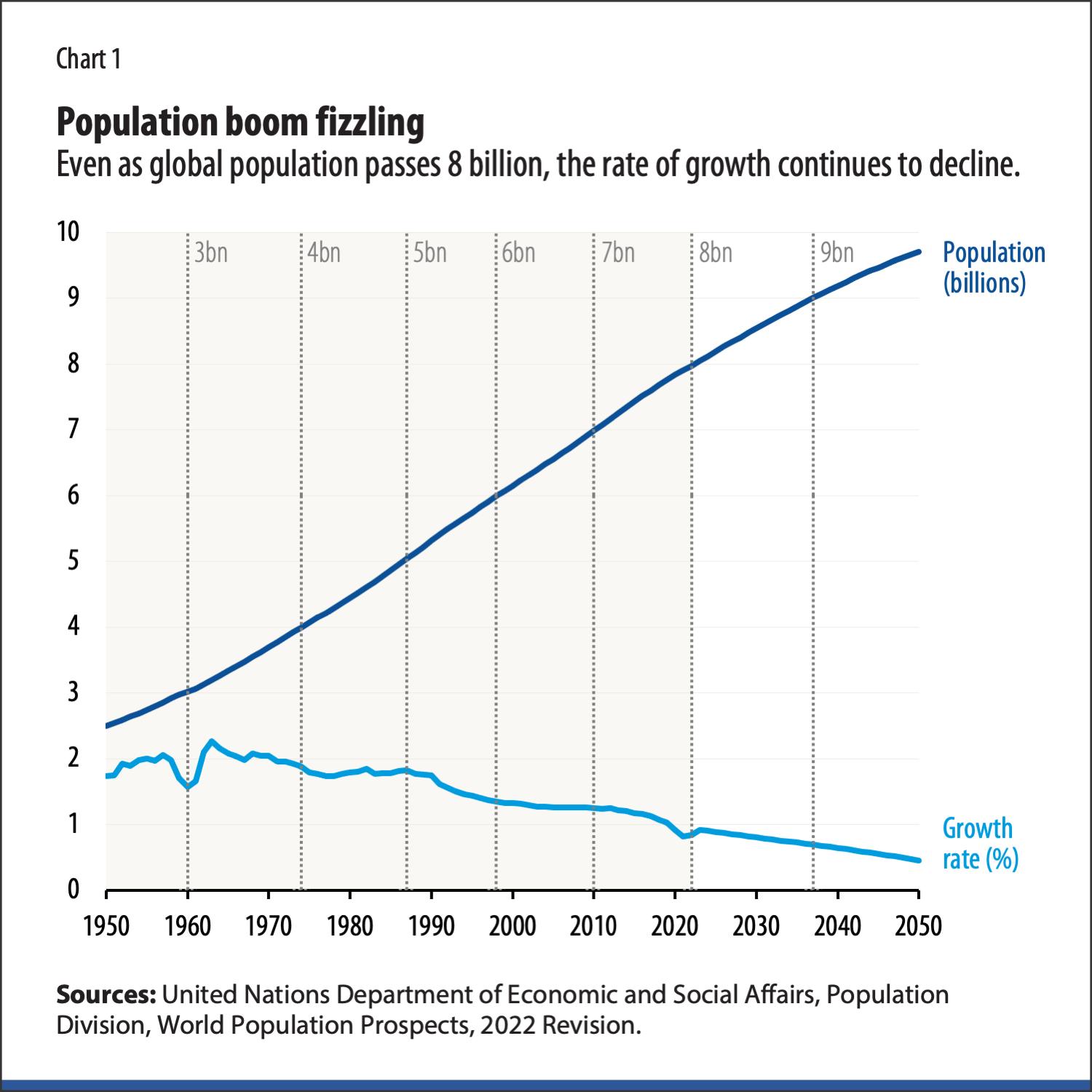
https://www.imf.org/en/Publications/fandd/issues/Series/AnalyticalSeries/aging-is-the-real-population-bomb-bloom-zucker More then DOUBLE the number of people aged 65+ will MORE THAN DOUBLE form 761 Million in 2021 to 1 in 10 people 65+
1.6 Billion in 2050 1 in 6 people 65+
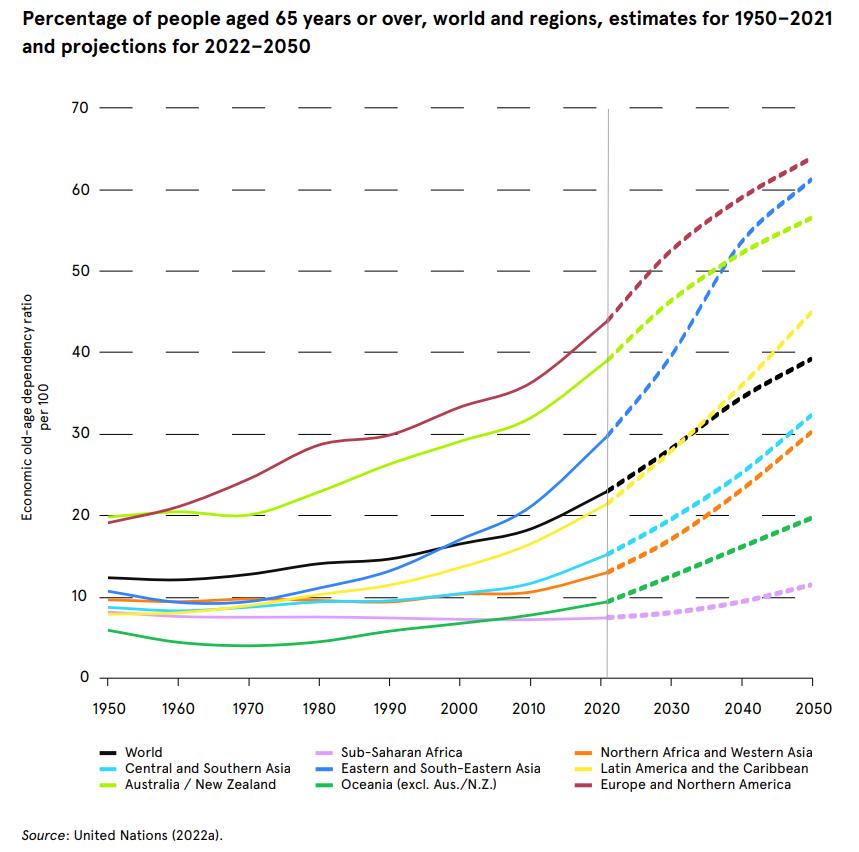
The aging population is creating many problems — especially regarding elderly healthcare issues
Diseases are “cured”, but people remains “not cared” for
• Multiple complex care needs
• Cross setting, disciplines, sectors
• From disease to health/wellbeing
• The weakening of the care labor
• Unfriendly payments and regulations
History of gerontological

Hartford Foundation initiatives in nursing education
A Hartford foundation initiatives in nursing education, nursing practice, nursing research, and nursing policy include enhancement of geriatrics in nursing education programs through curricular reform and faculty development. Nursing competence in aging in 2003. Nurse practitioner and clinical nurse specialist competencies for older adult care published by the AACN in 2004.
<1950 1996
Gerontological nursing education
Essential educational competencies and academic standards for care of older adults have been developed by national organization such as AACN for both basic and advanced nursing education.
In 2010, Recommended baccalaureate competencies and curricular guidelines for the nursing care of older adults has been published.
Gerontological nursing with little recognition
Gerontological nursing was seen as the application of general principles of nursing to older adults with little recognition of this area of nursing as a specialty, similar to obstetric, pediatric, or surgical nursing.
Developed standards of gerontological care
Organizations devoted to gerontology research and practice
The Gerontological society of America (GSA) demonstrates the need for interdisciplinary collaboration in research and practice.
(ANA,2018)
Nursing was the 1st of the professions to develop standards of gerontological care.
2006 2008 2010
A scoping review with 27 articles

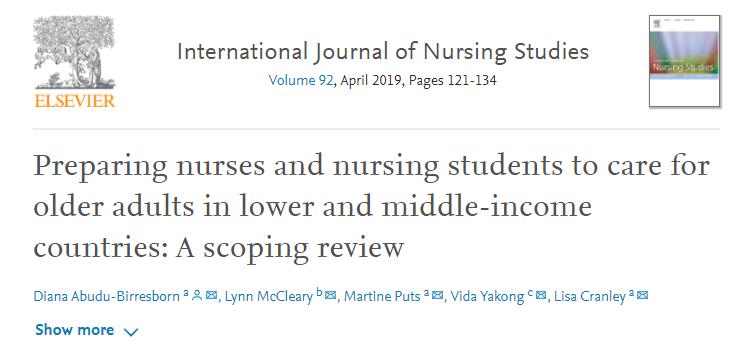
Survey in 2015

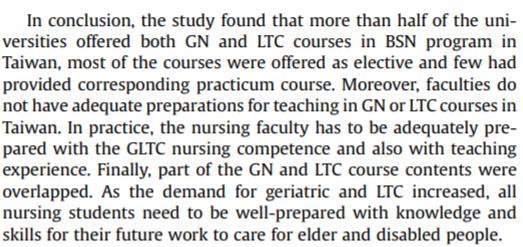
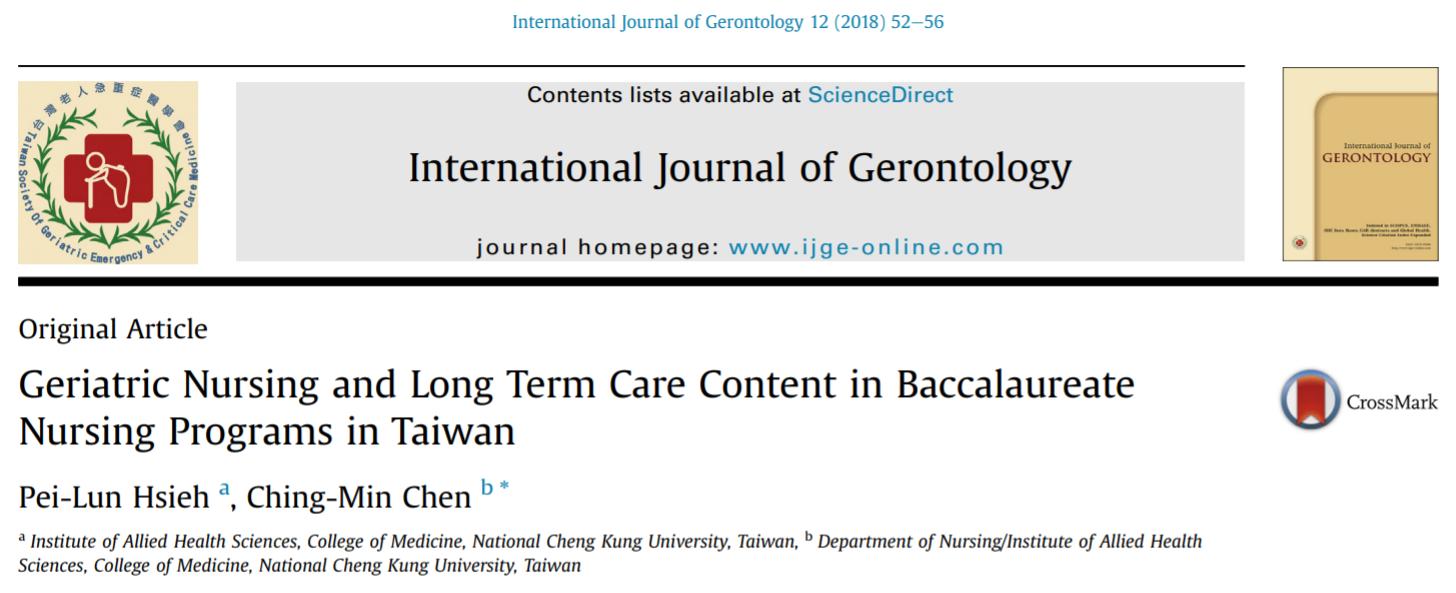
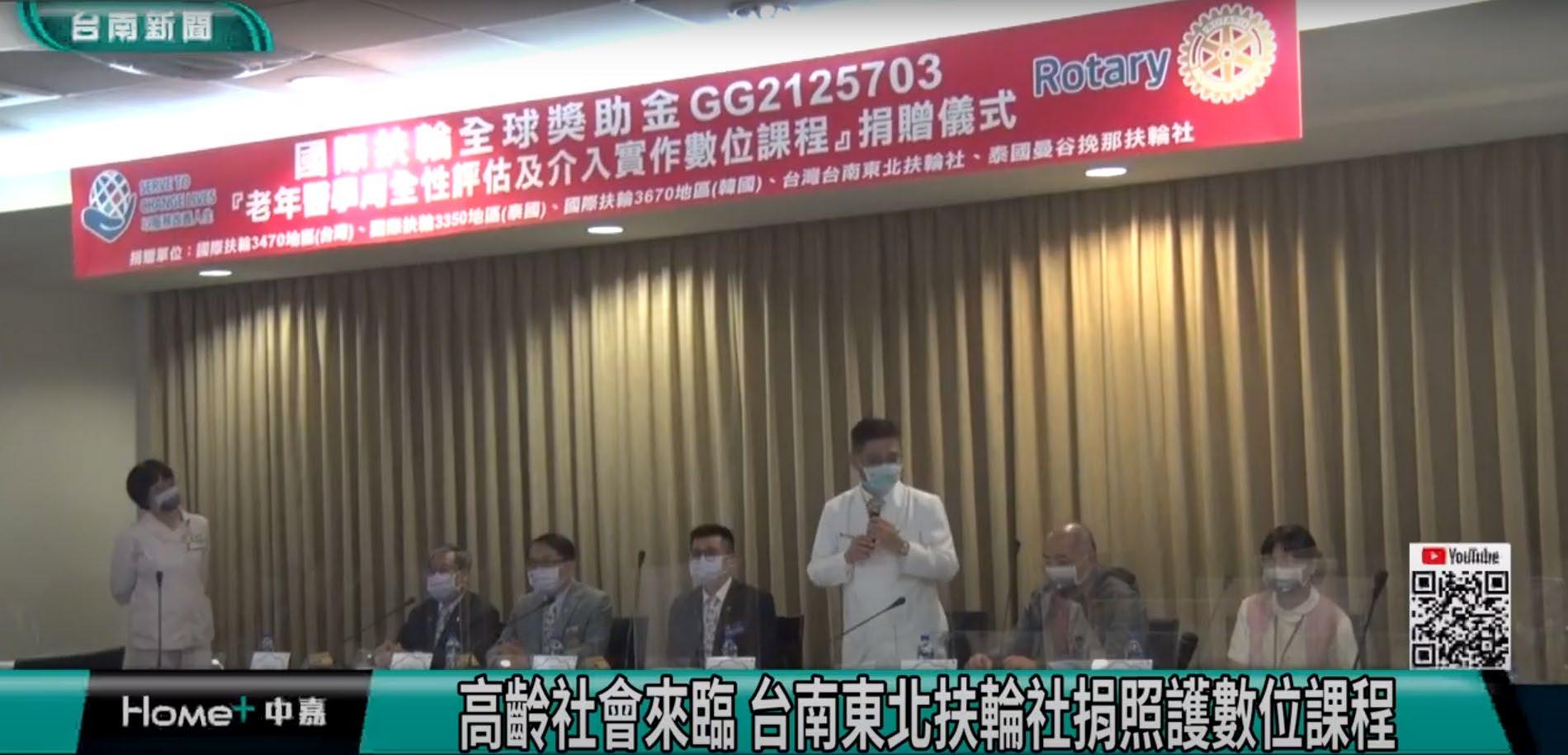
成大醫院高齡照護組


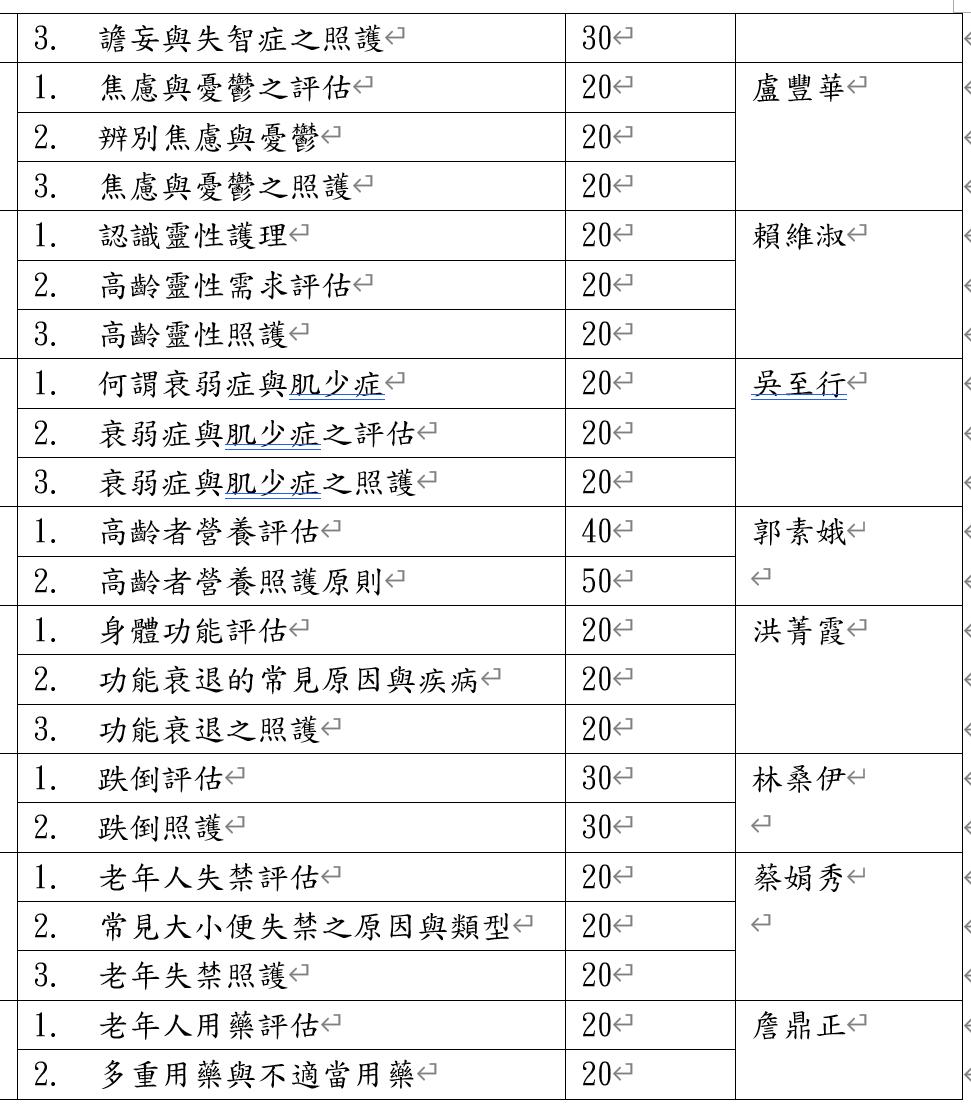
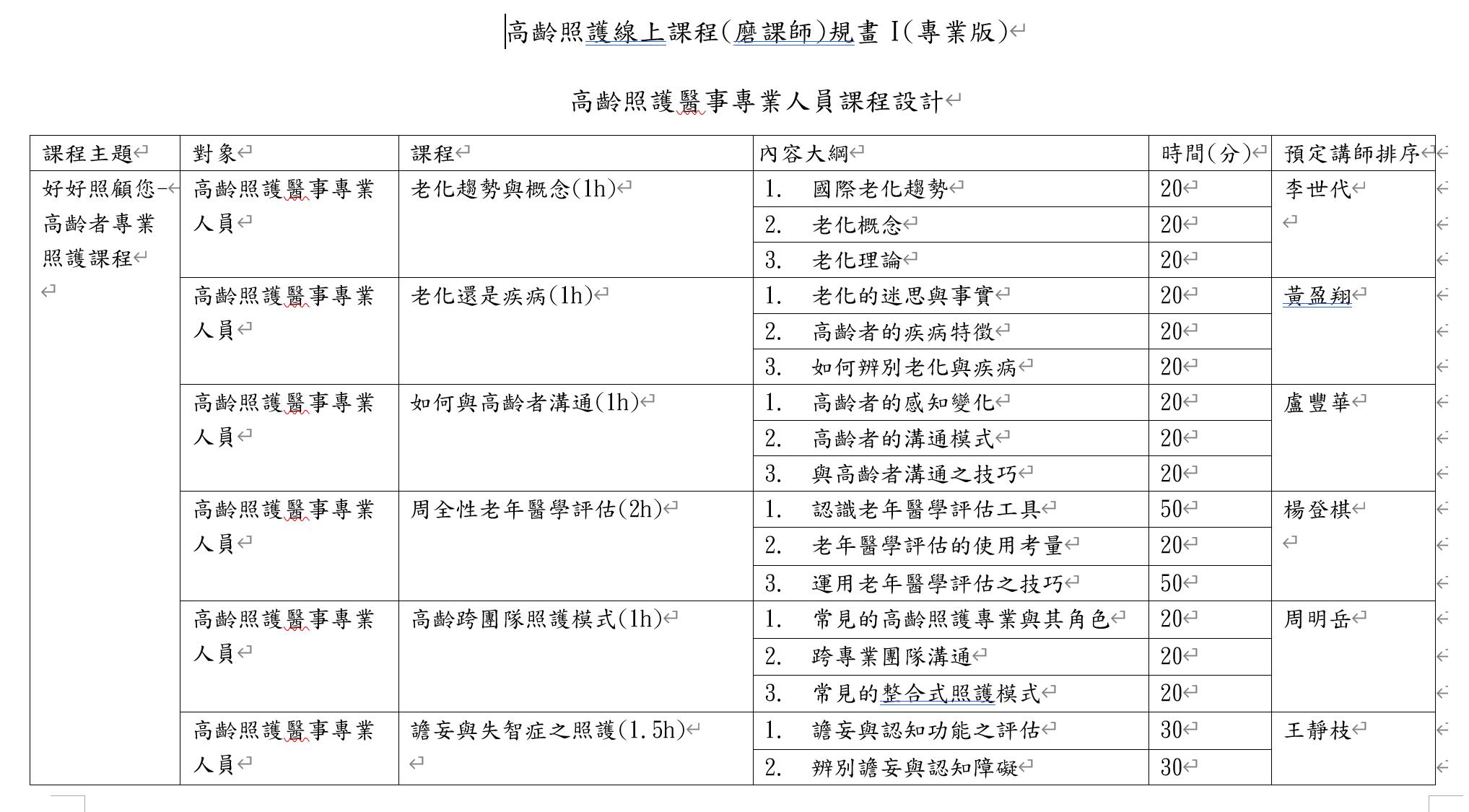
Experiences sharing- From material to a blended distance learning course

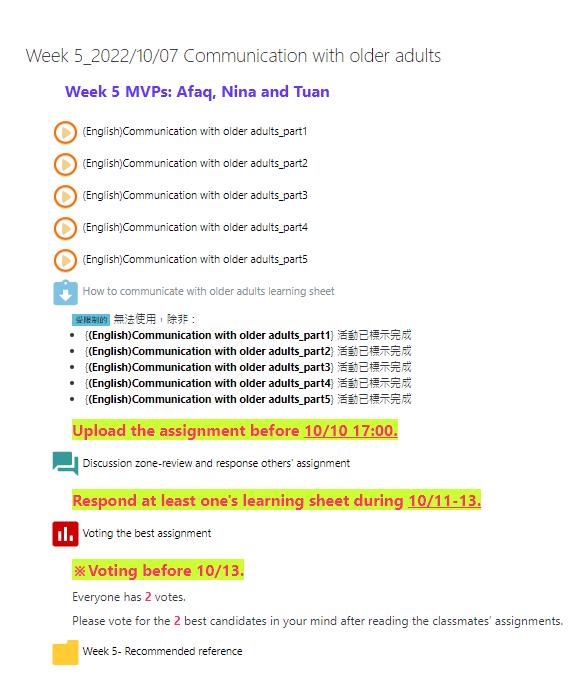
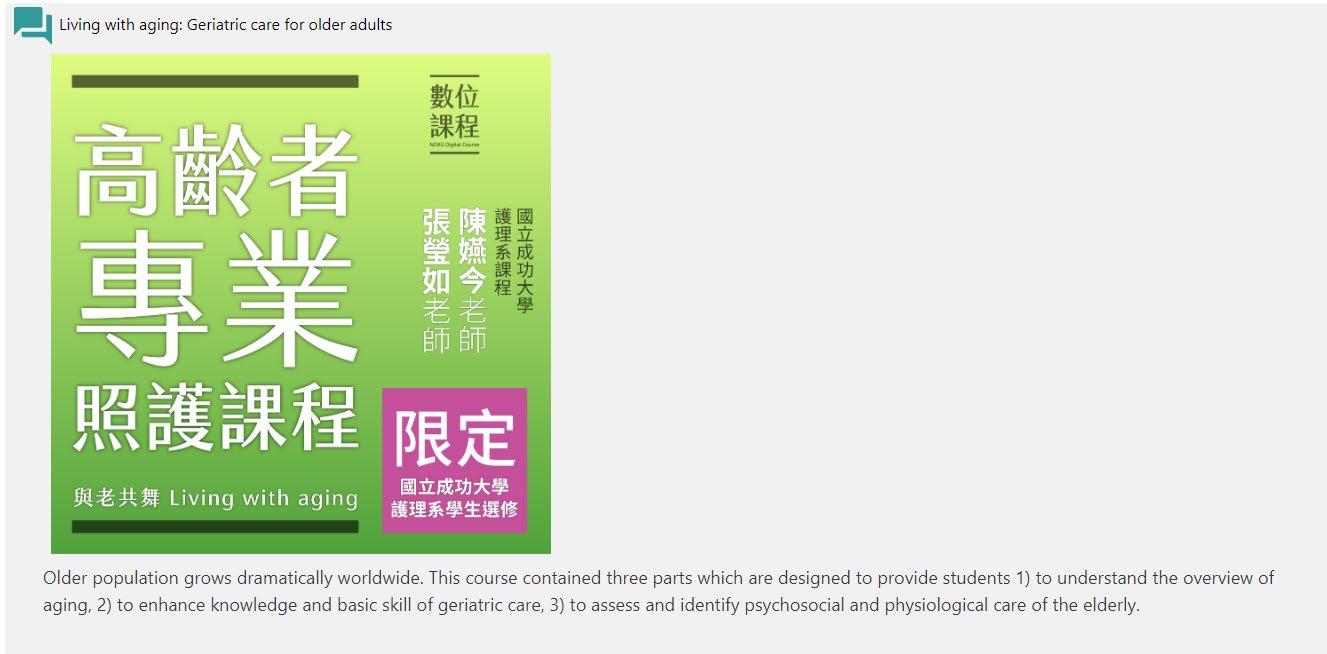
Keep the critical components in geriatric care course 01 Applied a learning theory to connect the objective of geriatric course and learners’ needs 03 Analyze the learners’ Learning needs 02 https://www.ypppt.com/How to take the first E-step?
Understand the critical components in geriatric care course
Normative
Learning fundamental knowledge and attitude of geriatric care.
Clinical practice
Learning skillful knowledge for helping healthy aging.
Programmatic
Focus on symptoms or diseases to develop a protocol or a health education leaflet based on effective evidence-based strategy.
01
Distinguish
Assess
Identify unique health needs by current development in elderly comprehensive assessment.
Analyze
Analyze the common issues relevant to geriatric syndromes (psychological and physical).
Provide effective strategy
Review effective strategies to geriatric care on own case scenario.
Understand the global aging and theoretical concept on aging. Distinguish the differences between normal ageing and ill health. 確 認 程 課 目 標
從既有的數位學習中挑選出符合課程目標的主題並增添需要的

Analyze the learners’ Learning needs
Needs Strategies
Time zone differences
• A blended learning
• Diverse professional backgrounds
• Cultural differences
• Language barriers
55% Asynchronous (e-learning)
45% Synchronous (Live+physical attend)
• Concrete questions for student thinking
Learning sheet
Quiz
• Learn from experts
02 •
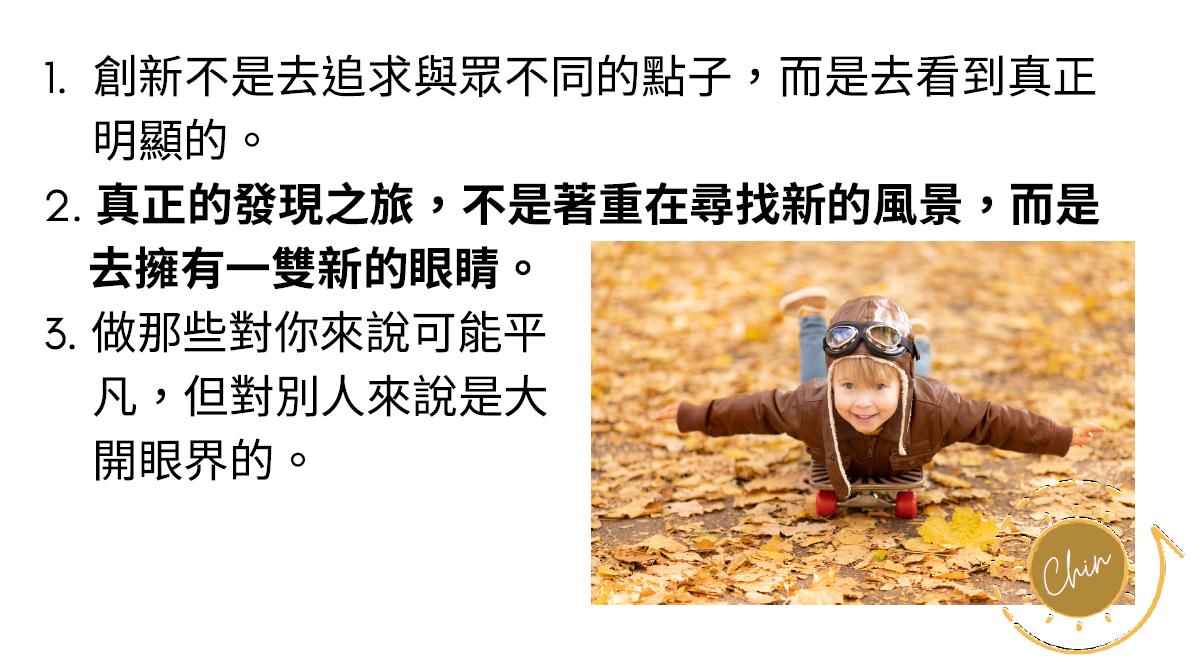
Implemented Sharestar (學思達) to connect teaching and learning





Self Learning
Thinking
• Online education material (videos, and handouts) on the Nlearning platform.




• Academic paper reading.
Discussions
Presentation
• Completing predesigned learning sheets that address specific geriatric care issues.
• Reviewing and commenting on other participants’ assignments.
Teacher
Conclusions
• Group oral presentation on a specific geriatric care issue.
• Group discussion and anonymous voting for the best assignments.
• Collaborative working for producing an agefriendly health education leaflet.
Comprehensive reviews of key learning points after each assignment to provide real-time feedback.
• Sharing excellent assignments to all students.
03
(思考問題)
(學生自學)
(小組討論)
(學生報告)
(老師總結)
01 02 04 05 03
Evaluation of learning outcomes
護理 醫學工程 成人教育
工程管理
自主學習 實 作 參 與 互 動 溝 通 規劃執行 創新思考 多元文化理解 溝通 表達 團隊合作 應用 實踐 跨領域 素養
Attitude Skill Knowledge
學生自學

Self Learning 1 FIRST


透過非同步進行數位學習 推薦與主題相關的文獻
觀看如何與高齡者
同步推薦updated相關文獻
的溝通的數位影片
思考問題


透過「學習單」消化吸收數位影片的內容
透過「看電影 Still Alice」連結失智者的照
2 second
學習單 Thinking
護
Distinguish the differences between age-related changing and ill-health.

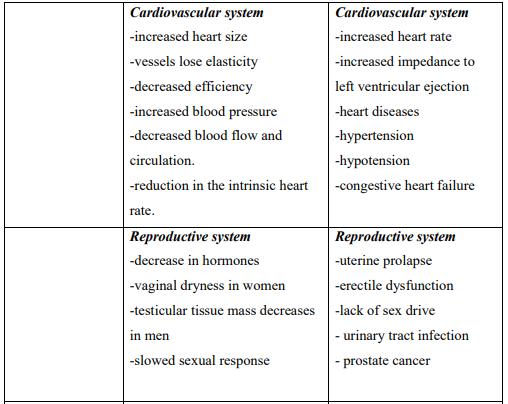
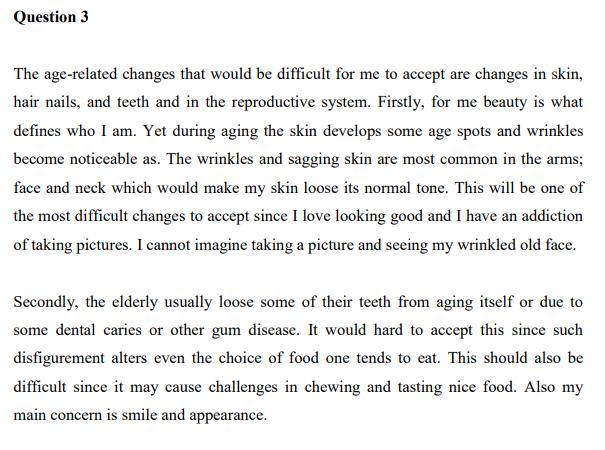
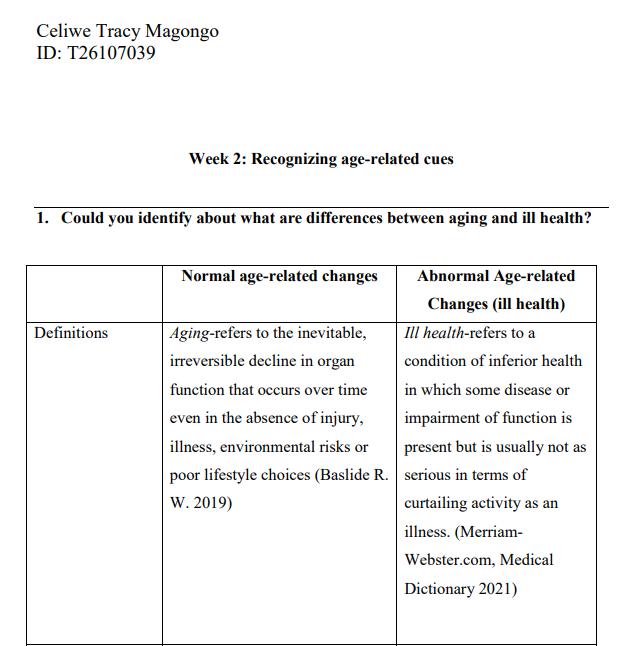
Age is a part of the life circle. Learn geriatric care not only for caring for patients but also maintain you have a good late life.
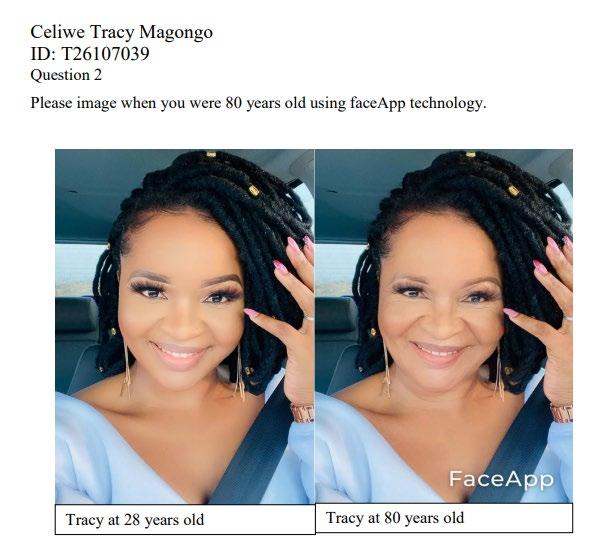
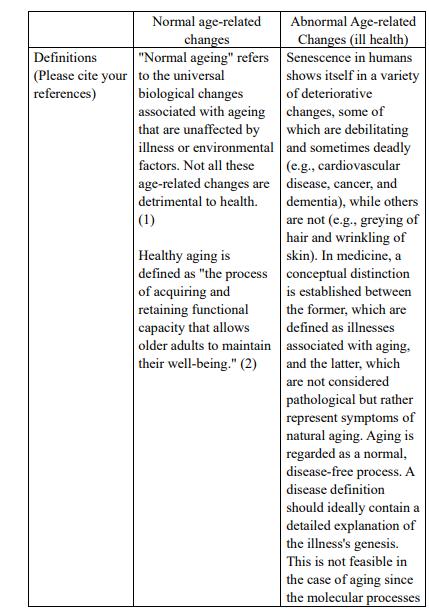
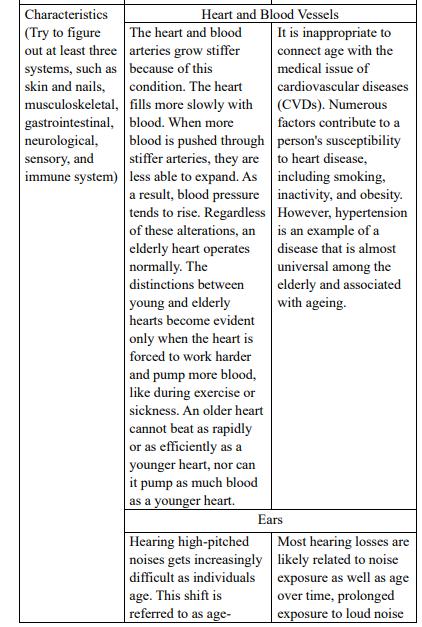
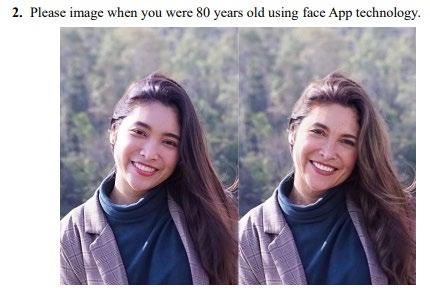


Speak in a rational way.
Based on a model to do comprehensive assessment.
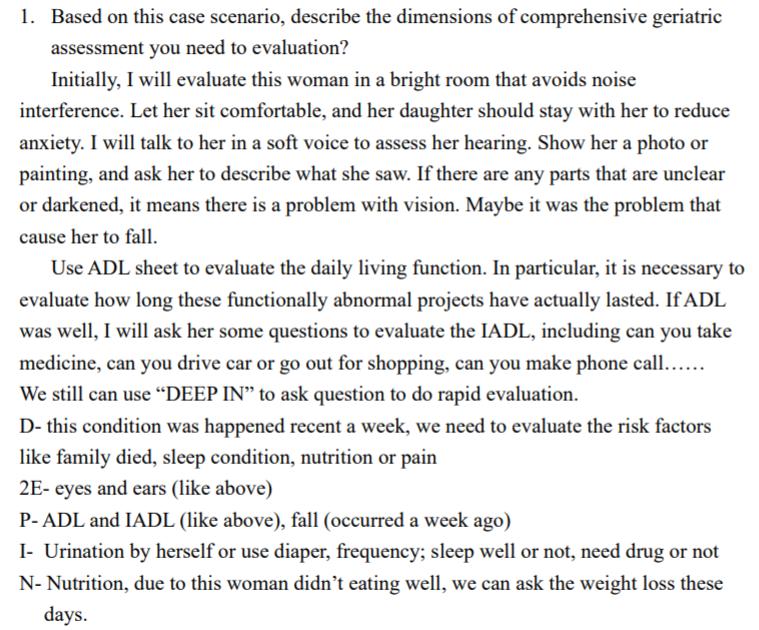
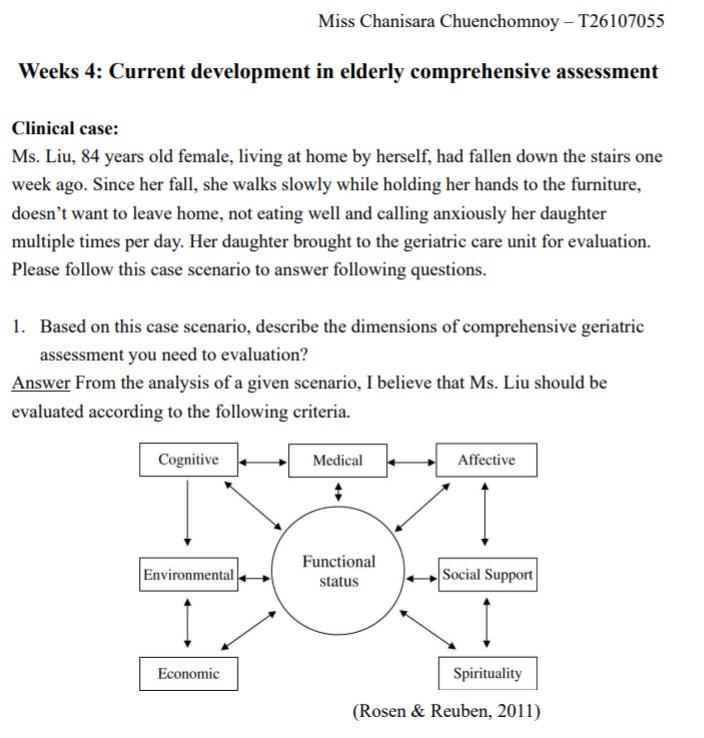
小組討論

3 third
Discussions

創造一個交流園地,進行同儕學習 透過投票選出優良作業 舉辦同步專家交流 場域參訪
一人有兩票,投出心目中的優良作業
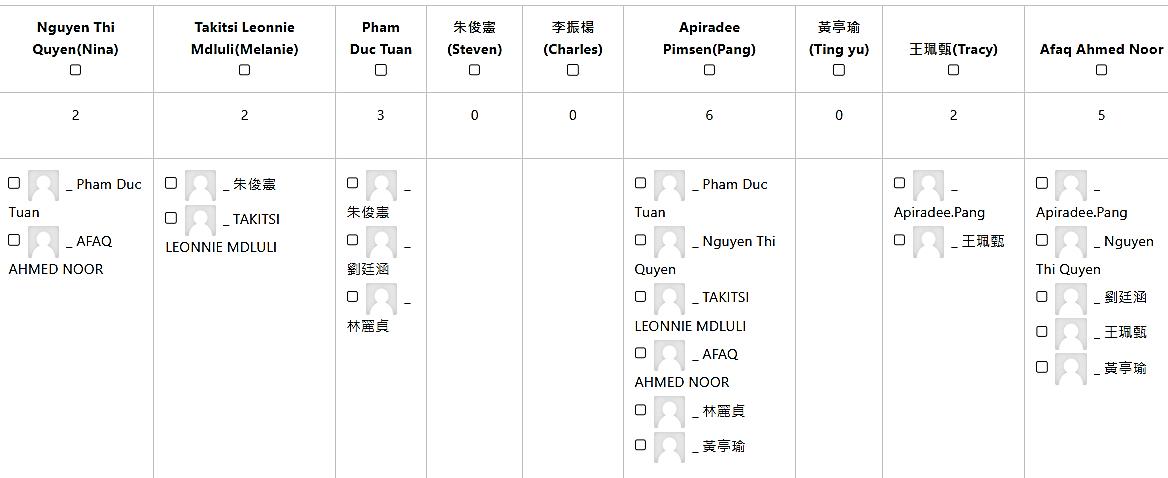
進行專家交流

場域參訪

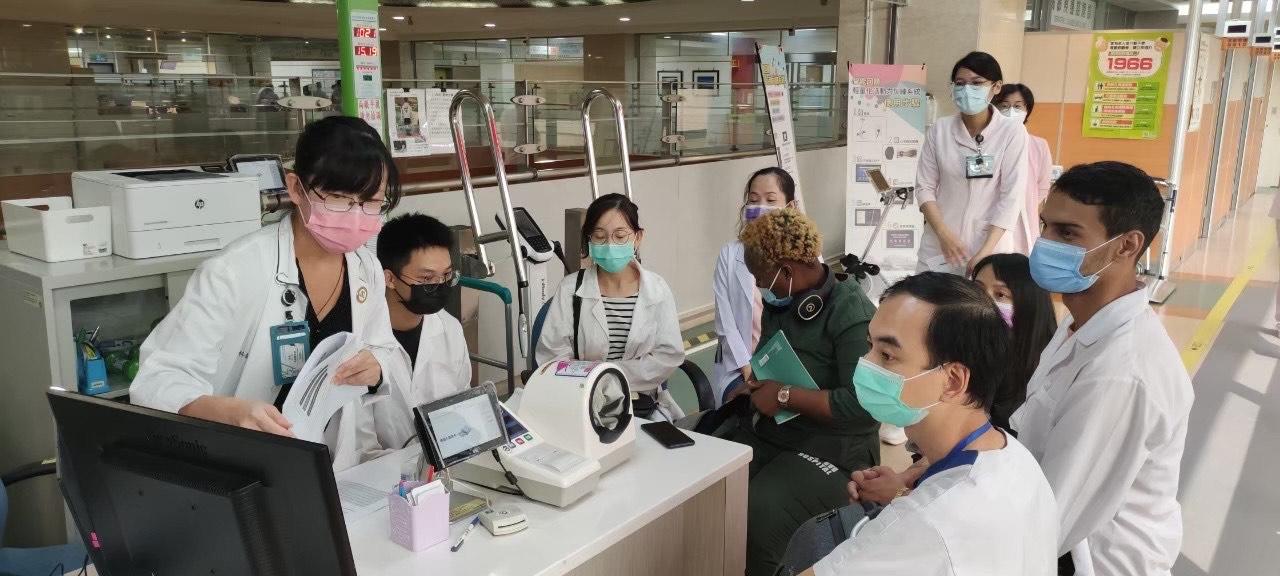
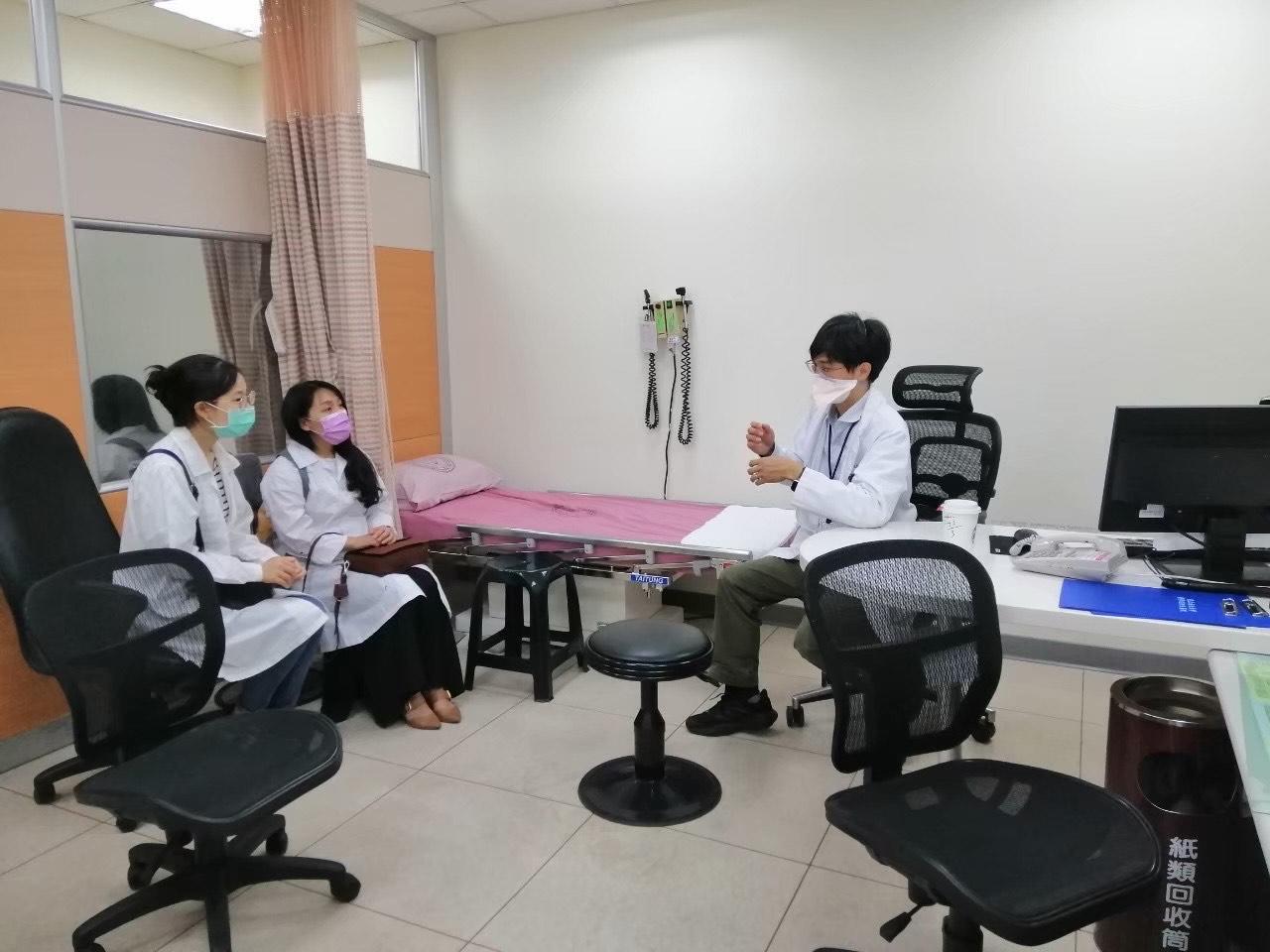
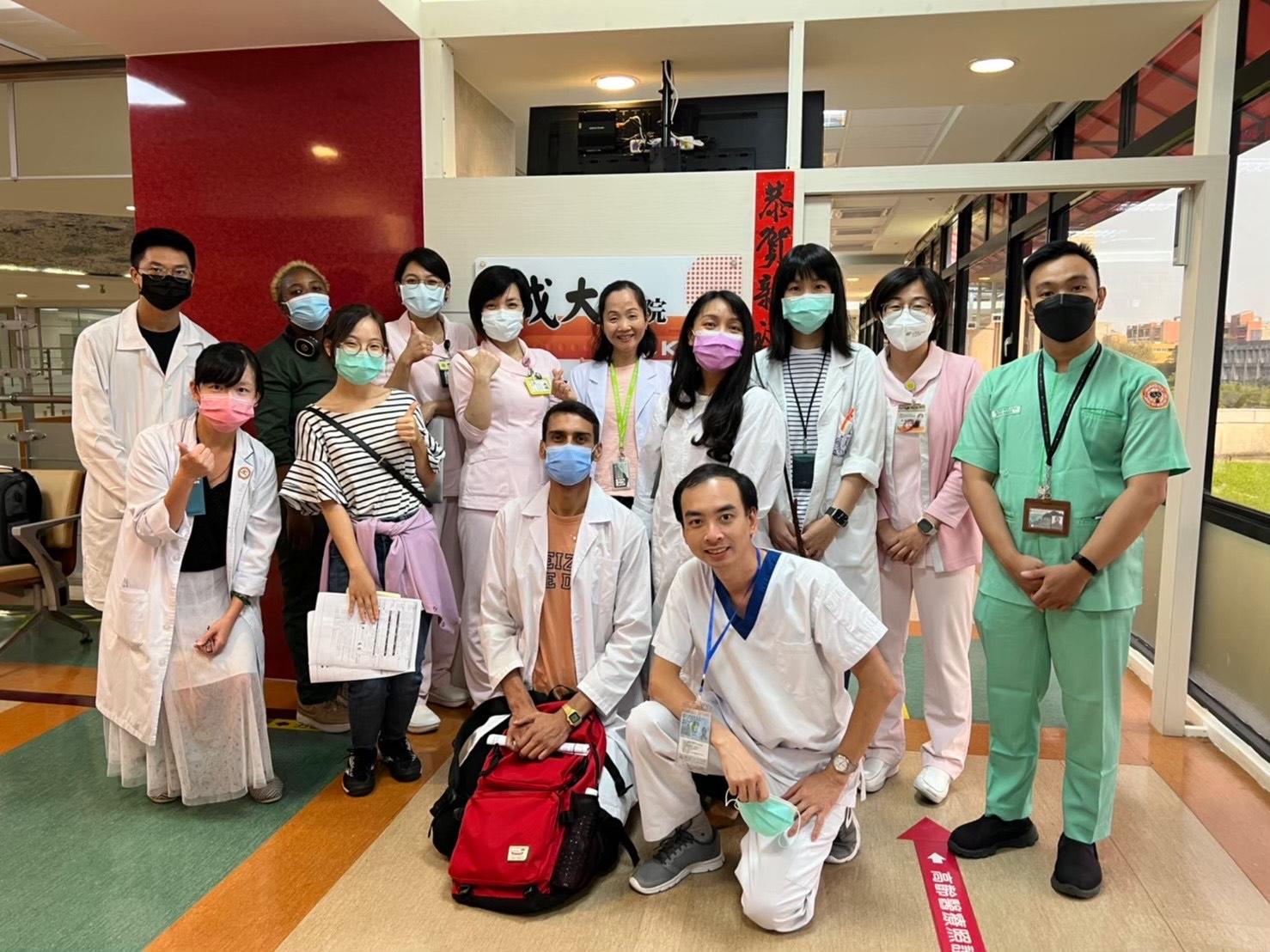
學生報告





作品展示: Protocol, leaflet…

4 fourth
Presentation

Web-Based Laughter Yoga for the improvement of Mental Health among
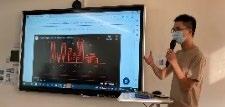
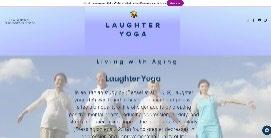
Older Adults
Video training for informal caregivers of people with dementia in the community
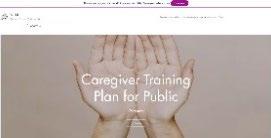
Application of Bluetooth-low-energybased fall detection and warning system for older adult inpatients in NCKU hospital


小組報告
老師總結
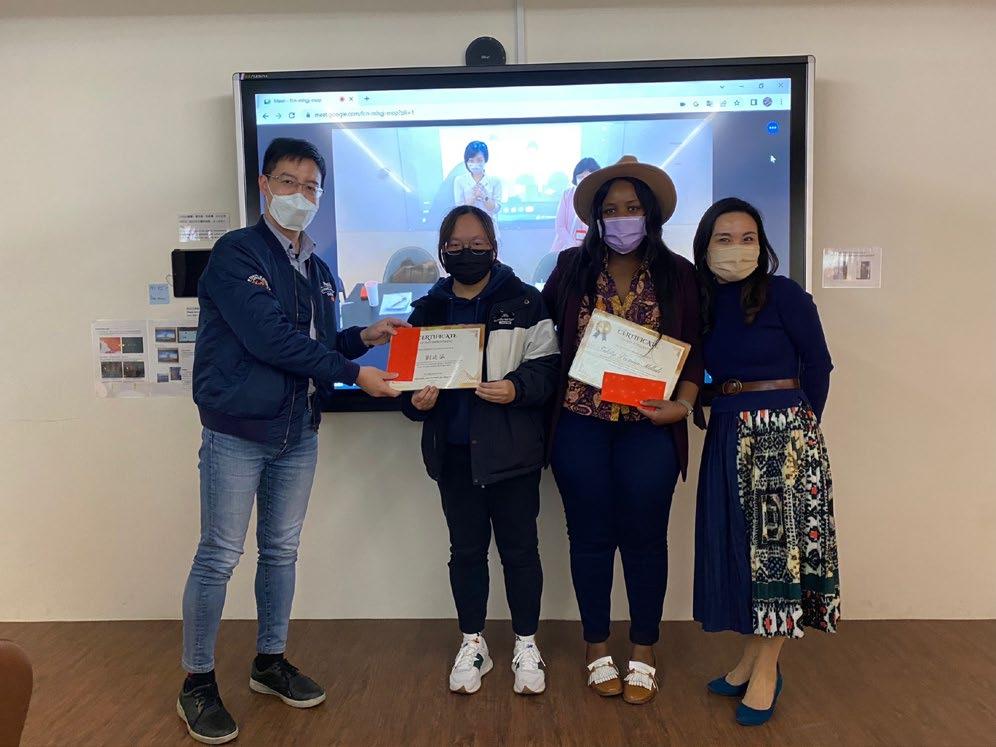


5 fifth

Conclusions

透過老師的視角,去總結每一周的 作業主要要讓大家學習到的目標 邀請領域專家參與作品發表會
頒獎課程中MVP
Evaluation Criteria-1
1. Show your works – Product amazing (30%)
• Each group will present the innovation products at the end of the course. (30%)
i. Following previous learning, pick up one of disease or geriatric syndromes you interested in, and review of interventions/best practices of health promotion strategies that are effective to address the problem.
ii. Groups will be encouraged to use digital technology to support the product, i.e. using an app., platform, or micro-video to show creativity.
iii. Contents of oral presentation (20-minute presentation and 10 minutes for Q/A) (see appendix 1):
(1) Topic (Linkage one of online course topics to assess and deal with it)
(2) Content of story
(3) Problem Analysis
(4) Designing an age-friendly health education leaflet, micro-video for solving the problem.
Evaluation Criteria-2
•
2. Completed online sessions, quiz and assignments (60%)
(A) There will be required watching for each online session, active class participation, and completing course assignments. The grade will be based on watching time of online course, active class participation (20%), grade of the quiz (10%), and quality of assignments (30%).
(B) For each session absence, 4 points will be taken away from the participation score.
(C) The purposes of these quiz and assignments are to confirm students understanding.
3. Course feedback (10%)
Knowledge Competence Attitude before 52.83 24.1 44.5 after 63.57 38.2 48.4 0 25 50 75 100 Mean scores p=0.027 p= 0.001 p= 0.018
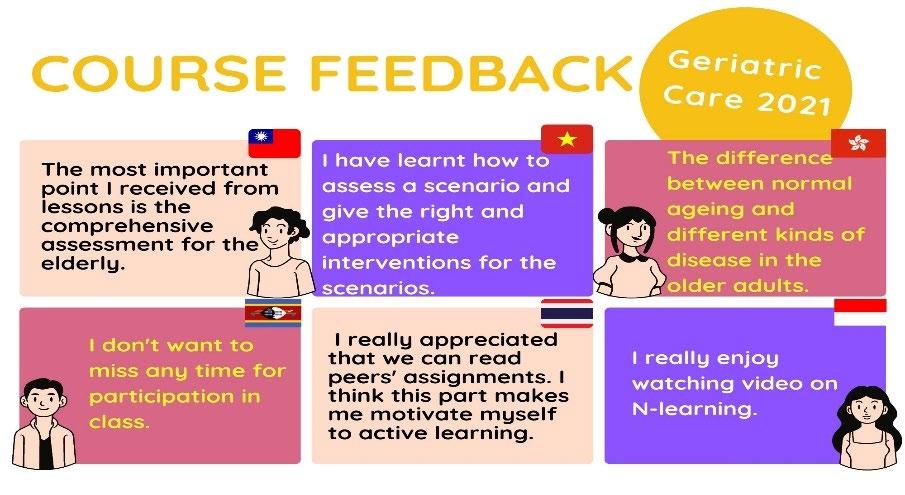


跨系選修的同學啾感心,
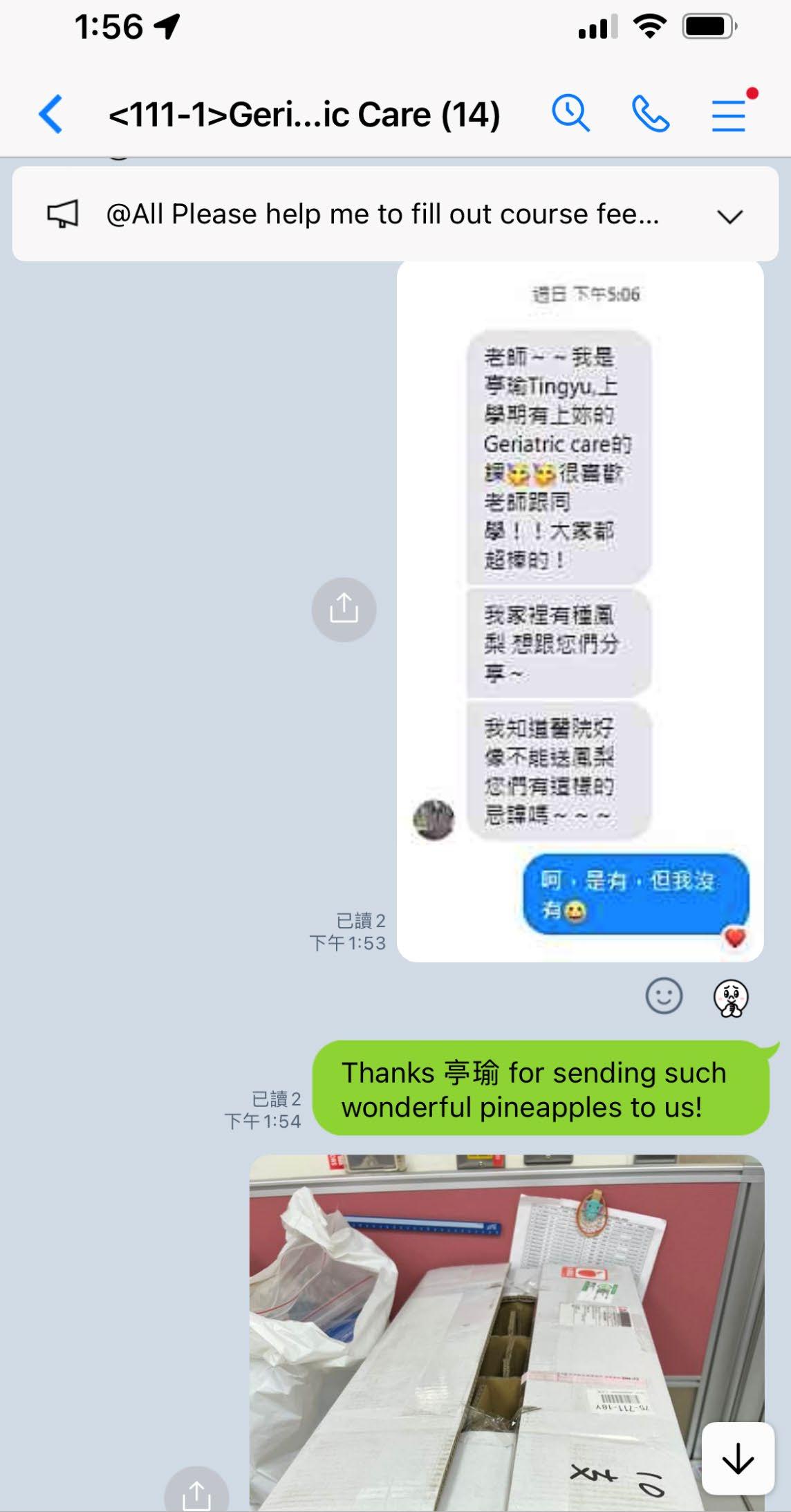
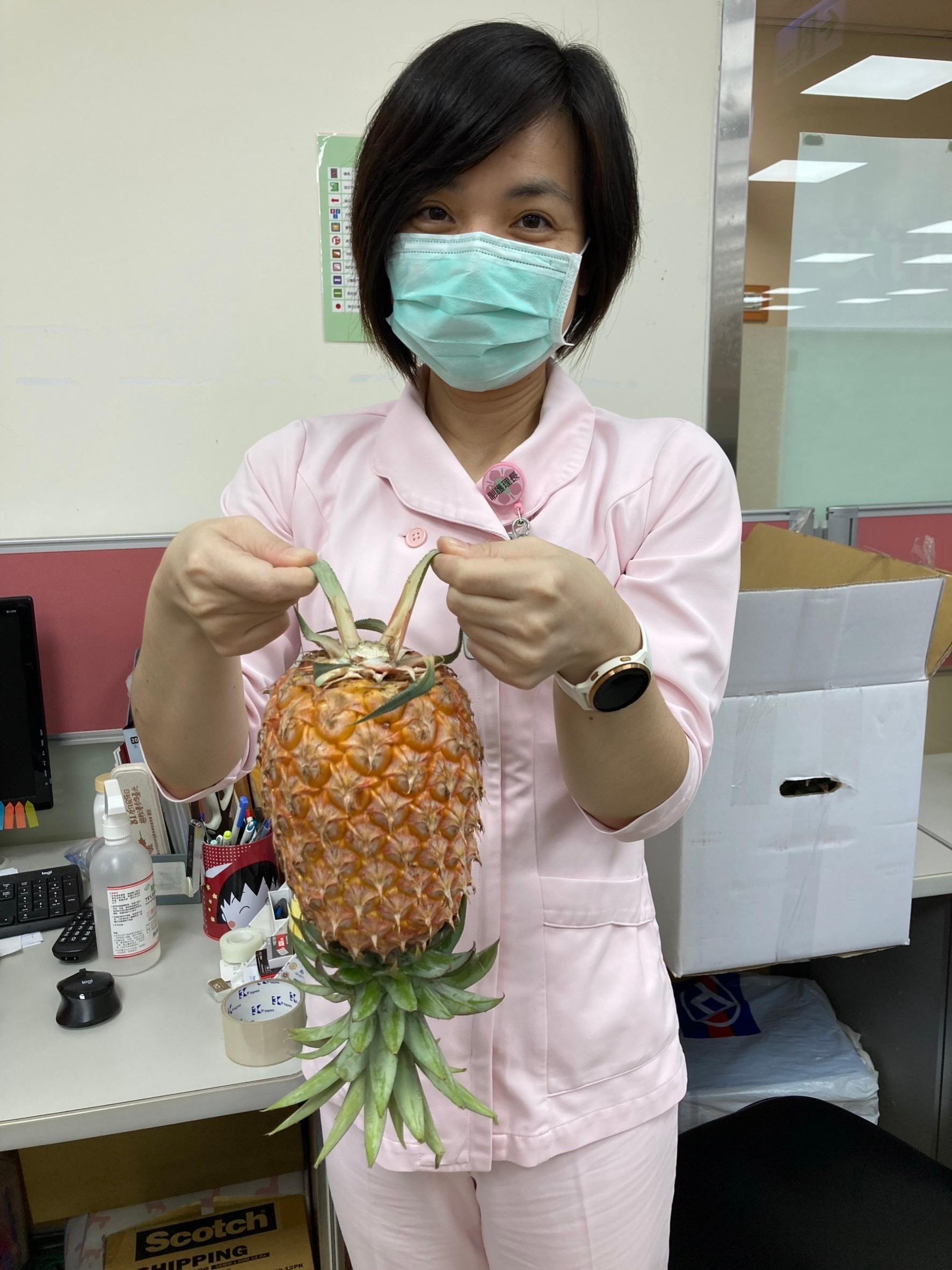
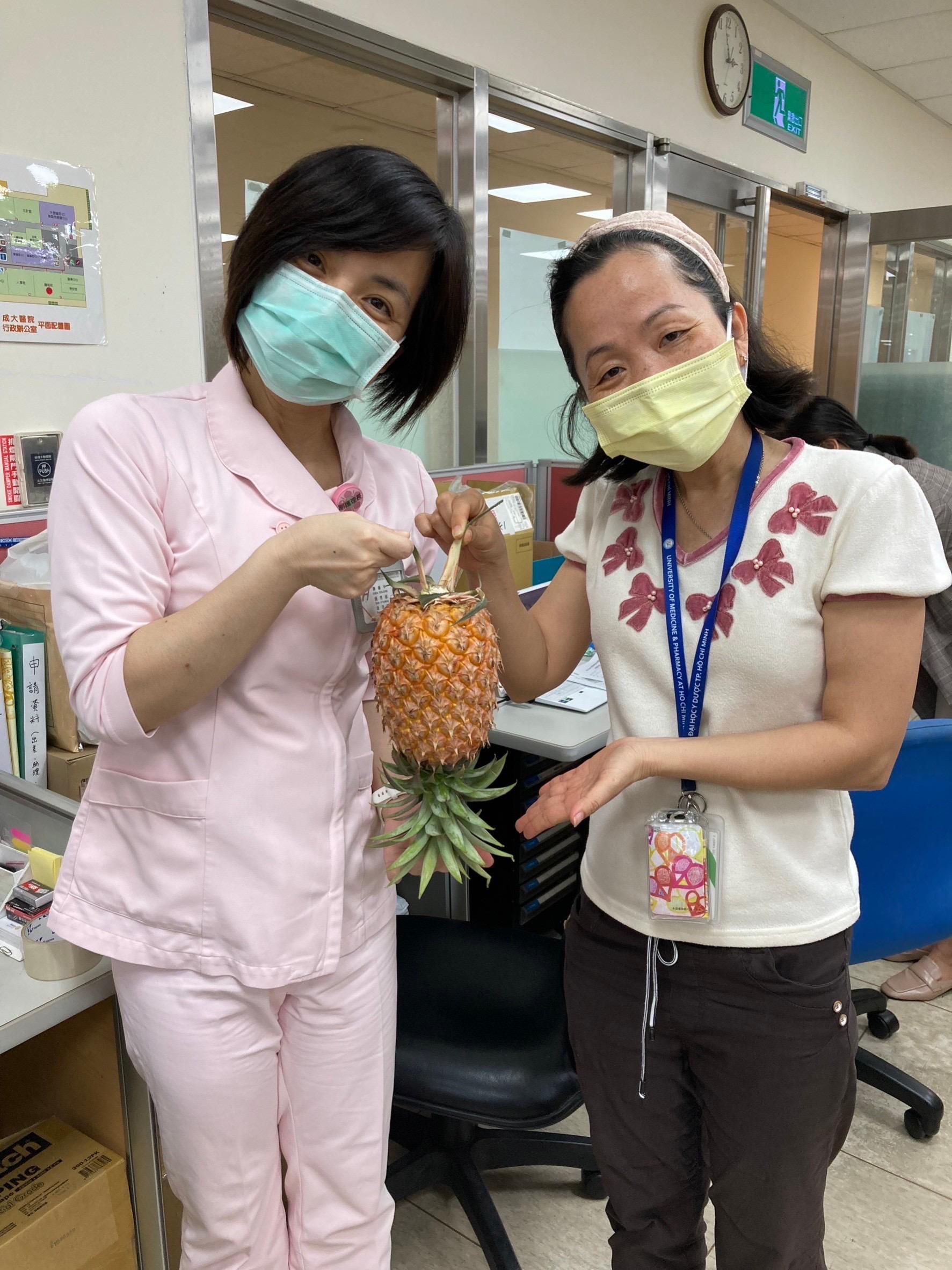
送來漂亮的鳳梨
From Challenges to the opportunities
Geriatric care education is an global need
Digital course makes learning time more elastic
Geriatric care is a practical training course
Rearranged geriatric course design would be benefit
Students came from different countries, how to reduce language barriers
Prepare bilingual versions of videos, assignments with well-structured
How to evaluate learning outcomes appropriately
Setting a standard evaluation methods
課程 E 化 過 程中所要 面對的 確定課 程主軸 學習者 需求 課程 設計 策略
優先思考方向
具應用性、有反饋
課程 成功 的因素 持續精進

E
化


陳嬿今 (Yen-Chin Chen) yenchin2427@gmail.com National Cheng Kung University and Hospital











































































